Evolution of the football boot continues with Adidas' knitted boot/sock hybrid
by: Gizmag Emerging Technology Magazine, 2014-03-14 05:56:29 UTC

Last week Adidas announced a radical knitted football boot, the Samba Primeknit (top left), but in an announcement today, the company has gone one massive step further by combining the boot and sock into what it believes will be the football boot of the future. While acknowledging the boot/sock Primeknit FS (top right) is a concept model, it plans to release the all-in-one hybrid later this year. Adidas claims the hybrid design provides a bespoke lightweight barefoot-like second-skin with vastly improved “feel” and a perfect fit from toe to calf...
Continue Reading
Evolution of the football boot continues with Adidas' knitted boot/sock hybrid
Section: Sports
Tags: Adidas,
Barefoot,
Boot,
Footwear,
Primeknit,
Shoes,
Soccer
Related Articles:
 An Innovative Catenary Pottery Printer By gt2P
An Innovative Catenary Pottery Printer By gt2P
by: design milk, 2014-03-13 16:00:05 UTC

If you’re an avid reader of Design Milk, you’ve probably seen all the innovative projects created with a 3D printer. However, we’re even more impressed by the newest “printer” from Chilean Studio gt2P, a Catenary Pottery Printer!

The printer was born out of a desire to create standard machines that generate non-standard results by mixing the normal numerical control with traditional material and techniques. It reintroduces the idea that parametric design isn’t necessarily always a digital computation methodology.

The pottery printer is an analog machine that uses computational logics and automation processes to form pottery. With the combination of all these factors, the machine can create a variety of objects, from tableware to candle holders to even hanging lights. This pottery printer is more than just a machine—it allows gt2P to speak about parametric design without computers and digital fabrication laboratories.














 The Aether Cone Makes Music Simple
The Aether Cone Makes Music Simple
by: design milk, 2014-03-14 18:00:45 UTC

Aether aims to make your music experience pretty simple with their latest design called the Cone. The conical speaker plays your music as soon as you turn the dial. If you like what you hear, just let it do its thing—if not, you turn it to move on to the next song. It’s that easy.

If you need to pause it because the phone rings, you hit the button in the middle of the speaker. The best part: if you want to hear something in particular you just ask for it. Press and hold the center button and tell it what you want to hear and BOOM—it begins to play. The smart device even learns what, when, and how you like to hear your music.

Cone plays music from any streaming music service, internet radio station, or podcast, so the options for music are unlimited.

The design is sleek and compact and comes in two colors: black/copper and white/silver. With an 8-hour rechargeable battery, you can listen to music all day without having to be near an outlet.

Cone will be available to ship early this summer, so reserve yours now.

















 A Desk That Takes Multifunctional to a Whole New Level
A Desk That Takes Multifunctional to a Whole New Level
by: design milk, 2014-03-10 14:00:44 UTC

When it comes to multifunctional, Adretcient Design Studio takes it to a whole new level with Taula, a design that optimizes the functionality of a regular desk and multiples it by, like, a lot. The base desk has a birch top that is perforated with circular holes, thanks to a calculated matrix, that allow for the included components to be moved around to suit your needs.


You can lay the panels down in various configurations right over the base to form a flat surface.

Cover the entire base to have a large table or desk.

Remove some of the panels to reveal holes so you can add containers to hold plants or office supplies.

Raised shelves hover over the surface to help create a divider between the opposite ends if you’re working with someone, or if you just need extra storage space.

Move the components around to create the perfect setup for today and then mix it up tomorrow.











 Paper-Brick: A Set of Paper Blocks That Look 3D
Paper-Brick: A Set of Paper Blocks That Look 3D
by: design milk, 2014-03-10 18:00:26 UTC

Nendo came up with a really cool design to be included as an insert into Japanese lifestyle magazine, Pen. Paper-Brick is a set of two-dimensional paper blocks that lets readers create three-dimensional looking objects.
The paper blocks are tricolor making them appear three-dimensional. “Stack” them or use them like puzzle pieces to assemble an object that won’t collapse.












Photos by Ayao Yamazaki.






 Sticky Lamp for Droog by Chris Kabel
Sticky Lamp for Droog by Chris Kabel
by: design milk, 2014-03-11 16:00:30 UTC

If you’ve ever wanted to add some light to a place where the sun doesn’t shine, just stick the Sticky Lamp there. Designed by Chris Kabel for Droog, the lamp is actually just a big ol’ sticker that you can place anywhere you need some extra light.

Photo by Gerard van Hees
The lamp is encased in the plastic that you’d normally discard from the packaging. In this case, the plastic is actually part of the lamp.

Photo by Stefanie Grätz (Styling by Marjo Kranenborg, CMK)
Stick the lamp on the wall next to your bed, on the ceiling, or even on the floor. The options are endless!






 Drapée: A Stackable Chair by Constance Guisset
Drapée: A Stackable Chair by Constance Guisset
by: design milk, 2014-03-13 14:00:41 UTC

The latest from designer Constance Guisset is the Drapée Chair, created for Petite Friture. The stackable chair is made of simple steel rods that flow from the top to one side at the bottom, making it reminiscent of draped fabric.

The rods are framed by larger steel rods that curve around and extend out to create the legs of the chair. The lightweight chairs even stack so when they’re not in use, stack them in the corner.





Photos © Constance Guisset.






 Blue Diversion develops a toilet that's a lot more than flush and forget
Blue Diversion develops a toilet that's a lot more than flush and forget
by: TreeHugger Design, 2014-03-13 16:57:16 UTC

A toilet is just the working end of a much larger system that can have a huge impact on society.
Cradle to Cradle Product Standard Under Revision
by: Environmental Leader, 2014-03-12 16:44:50 UTC

The Cradle to Cradle Certified Product Standard will be updated, and for the first time, outside input will be sought. The Cradle to Cradle Products Innovation Institute’s certification standards board, an independent entity, said it is seeking more stakeholders in an effort to bring more transparency to the process. The standards revision will continue throughout the […]
 Former Design Challenge Participant Tells How to Build a Sustainability Career
Former Design Challenge Participant Tells How to Build a Sustainability Career
by: Biomimicry 3.8, 2014-03-11 21:04:39 UTC
 As a participant in the 2012-2013 Biomimicry Student Design Challenge, Stephanie Koehler and her team from the Minneapolis College of Art and Design created a solar purification device that garnered her team finalist status in both round one and round two of the global competition. Since that experience, Stephanie has launched a career as a sustainability design strategist. She describes her journey in a three-part article series in Core77.
As a participant in the 2012-2013 Biomimicry Student Design Challenge, Stephanie Koehler and her team from the Minneapolis College of Art and Design created a solar purification device that garnered her team finalist status in both round one and round two of the global competition. Since that experience, Stephanie has launched a career as a sustainability design strategist. She describes her journey in a three-part article series in Core77.
This is an excerpt from Stephanie Koehler’s third article in the three-part series from Core77. Click here to read the entire series.
During the 2012–13 Biomimicry Student Design Challenge (BSDC) competition, I discovered that solving humanity’s biggest design challenges requires new skills applied within a comprehensive framework that integrates sustainability. I gained a deeper understanding of the Buckminster Fuller Institute’s tenet of what Fuller described as “comprehensive anticipatory design scientists.” (Fuller, 1999)
Learning from nature
Biomimicry, the practice of emulating models and strategies found in nature, provides designers with tools for seeing and learning from nature in new ways (Biomimicry 3.8 Institute), serving to both embed an ethos of sustainability and potentially inspire radical thinking.
For the competition, I explored the use of biomimicry as a process for creating a sustainable product as well as a scalable social enterprise idea. Under the inspirational guidance of Denise Deluca, co-founder and director of Biomimicry for Creative Innovation (BCI), this work ultimately grew from my Master’s thesis project.
My design concept was a water treatment system called SolDrop. My team went on to become the only US finalists in the global 2013 BSDC and I had the honor of presenting at the Biomimicry Education Summit and Global Conference in Boston that year.
Lessons I Learned
The design challenge and thesis experience allowed me to see that biomimicry offers designers many things:
- A toolkit for innovative and a methodology to address design challenges in a new way
- A deeper understanding of sustainability and whole systems thinking through exploring biological strategies
- A means to embed an ethos of sustainability into design
- A unique perspective when designing social solutions and the business ecosystem
- A greater connection to nature, other people, the dynamic living world–in short, the interconnectedness of everything
In retrospect, I took far more away from studying, practicing and making biomimicry thinking a part of my daily habits than I had ever anticipated. Initially I thought I’d just be tackling the product as a designer, but soon shifted to creating a water treatment option that also engages local communities and enhances local economies for long-term positive impact.
References:
Fuller, R.Buckminster. Your Private Sky: The Art of Design Science. Ed. Joachim Krausse; Claude Lichtenstein. Baden: Lars Muller, 1999.

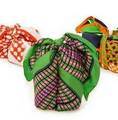

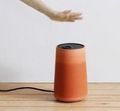
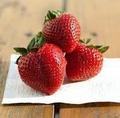
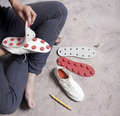
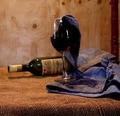
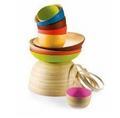
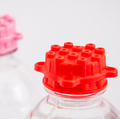
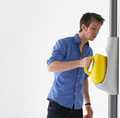

Comments by our Users
Be the first to write a comment for this item.